The EC value in cannabis grow
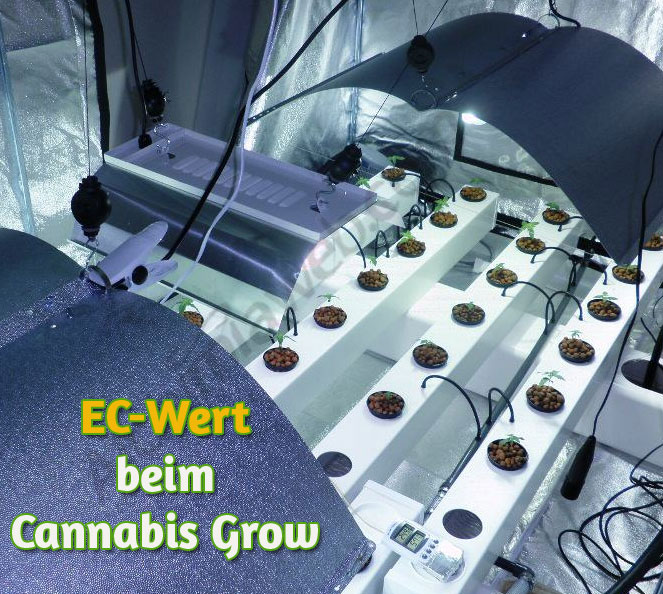
The EC value (electric conductivity) is a physical quantity and indicates the electrical conductivity of a substance. It is given in S/m (Siemens per metre) or, in the case of measuring instruments, usually as mS/cm (mS for short).
In water, the salt content influences the electrical conductivity; the higher the salt content, the higher the conductivity. For example, distilled (demineralised) water has an EC value of 0.00005 mS, tap water about 0.5 mS and seawater about 50 mS. Since mineral fertilisers consist mainly of salts, the EC value can be used to measure the salt content and thus the amount of fertiliser.
As mentioned above, the EC value of tap water is around 0.5mS, but in some areas it is 0.6 and higher. In these cases you should use a Reverse osmosis system that produces EC-neutral water and mix this water with tap water until you get good water.
In many regions, tap water is not of good quality. This can make plant cultivation difficult in various ways. For this reason, professional horticulturists treat the water with osmosis systems. These are fine water filters that remove 95% of the dissolved substances from the water so that precise fertilisation is possible.
The ideal starting point for nutrient solutions is water with EC 0.4 mS. To determine the EC value, there are electric EC meters, with these you can accurately determine the nutrient content. They consist of a probe and an electrode that is used to determine the conductivity. There are devices that measure the EC value continuously and handheld devices with which the value can be determined quickly.
The EC value of a solution changes when its temperature changes. Modern measuring devices take this into account and deliver identical measured values even at different temperatures.
Depending on the growing medium, checking the EC value is absolutely important. On soil, good results are possible without regular measurements due to the buffer behaviour, if you stick to the fertilisation schemes of the manufacturers and keep an eye on your plant (see also Problems with growing - deficiency symptoms), but when growing on coco, rockwool, hydrocorrels or aeroponically without any medium at all, regular control and exact adjustment is indispensable. The function of the soil as a buffer is omitted with these growing media and salinisation/over-fertilisation or under-fertilisation occurs very quickly.
How do I measure the EC value of the substrate?
It is important to determine the EC content of the substrate to know how many salts are in it. If the growing medium contains too many salts, this leads to overfertilisation/salinity of the soil and the plant can no longer absorb nutrients. The EC value of the substrate can easily be determined by measuring the electrical conductance of the water that runs off (water that runs out of the pots).
The first clue is obtained after the measurement by comparing the draining water with the fresh nutrient solution. If the EC value of the outflowing water is higher than that of the watering water/nutrient solution, there are too many mineral salts in the substrate. The plants should then be rinsed with unfertilised pH-neutral water, with 3 times the amount of the pot size (10l pot = 30l water). Then check the EC content of the water that has run out again and repeat the whole process, if necessary, until the values are at a normal level.
When growing on coco or hydroponically, flushing should be done if the drainage water has an EC value higher than 2.5. By flushing, the roots usually recover within a short time and normal fertilisation is possible again.
When growing on soil, flushing should already be carried out when the EC value of the drainage water exceeds 2.3-2.4. Above these values, soil becomes saline and the roots can no longer absorb nutrients.
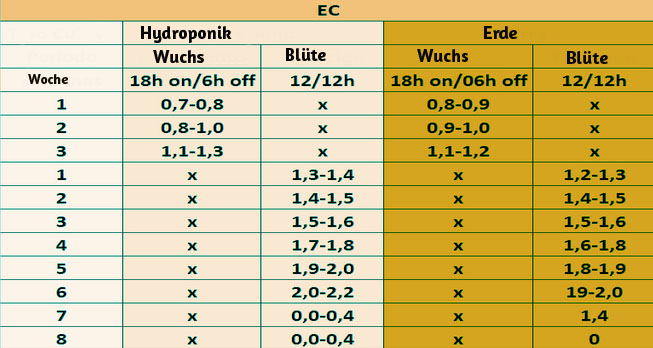
Danger of reverse osmosis due to overfertilisation
It is important not to let the EC value (salt content) of the substrate get too high, otherwise reverse osmosis will set in within the plant. If the EC value in the roots is higher than that of the substrate, everything is fine. However, if the electrical conductance of the substrate is higher than that in the roots, the plant will try to stabilise the substrate and divert water from the roots into the grow medium to dilute the salts. This causes the plant to dry out. At first the leaves start to curl up, later the plant even dies completely. It is therefore important to check the salt content of the substrate regularly and, if necessary, to bring it back to a normal level by rinsing.
Different cannabis strains require different EC values. Basically:
- Indicas are best grown with an EC of 2.2 on soil, or 1.8-2.0 hydroponically, whereas
- Sativas require less nutrients and give the best results at 1.8 on soil and 1.6-1.7 hydroponically.
The temperature of the water is also important. For example, the plants can absorb more nutrients at 20°C than when the water is at 30°C.
You can find important tips on the practical use of an EC meter at EC-Meter, correct measurement, calibration and maintenance
Another important factor when watering is the pH value, you can read more about this here. here.
Here are some EC meters that are very suitable:
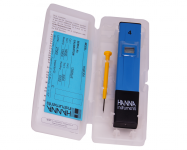 Hanna Dist 4
Hanna Dist 4
Low-cost EC meter with a robust graphite probe that requires little maintenance and measures very accurately. Hanna DIST 4 is not waterproof and cannot be submerged.
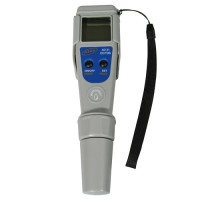 Adwa AD31
Adwa AD31
The ADWA AD31 is a waterproof EC meter for the small purse. Accurate determination of electrical conductivity is child's play and can be carried out very quickly.
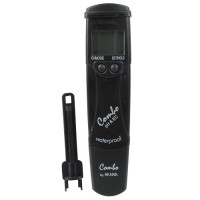 Hanna Combo Meter
Hanna Combo Meter
The Hanna Combo-Meter measures the EC value, the pH value and the water temperature. This gives you a simple and effective control of all parameters of the nutrient solution.
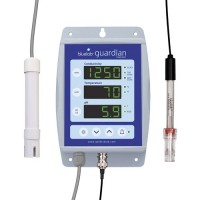 Bluelab Guardian Monitor
Bluelab Guardian Monitor
The Guardian Monitor from Bluelab reliably monitors EC value, pH value and temperature of the nutrient solution via two probes that simply hang in the water. One pH probe and one for the EC value and temperature. All three parameters can be read at a glance on the large screen. For professionals, an excellent and reliable solution.






